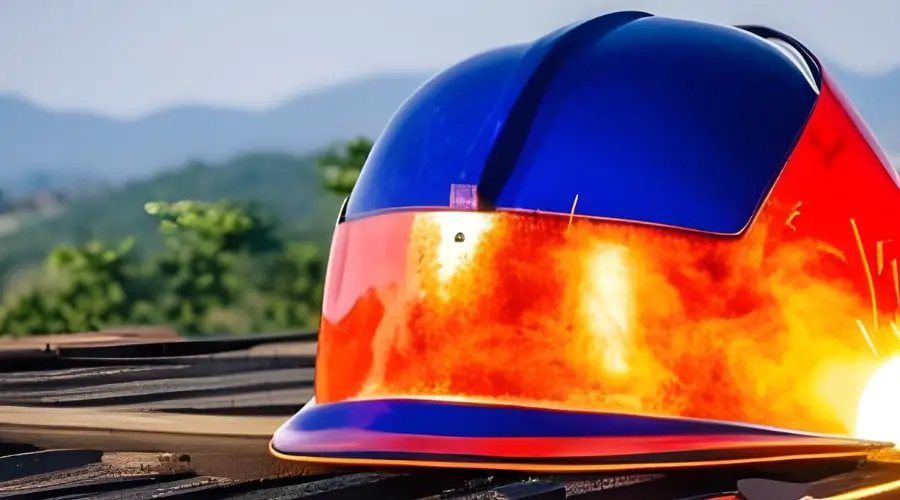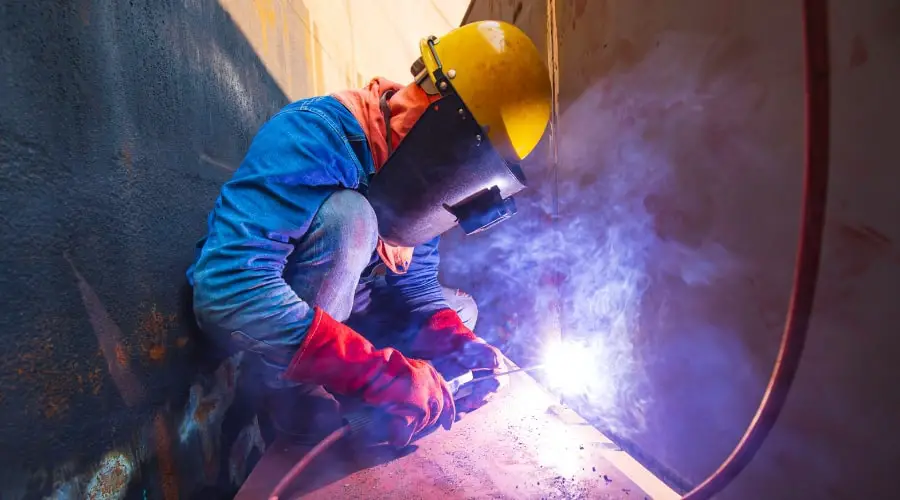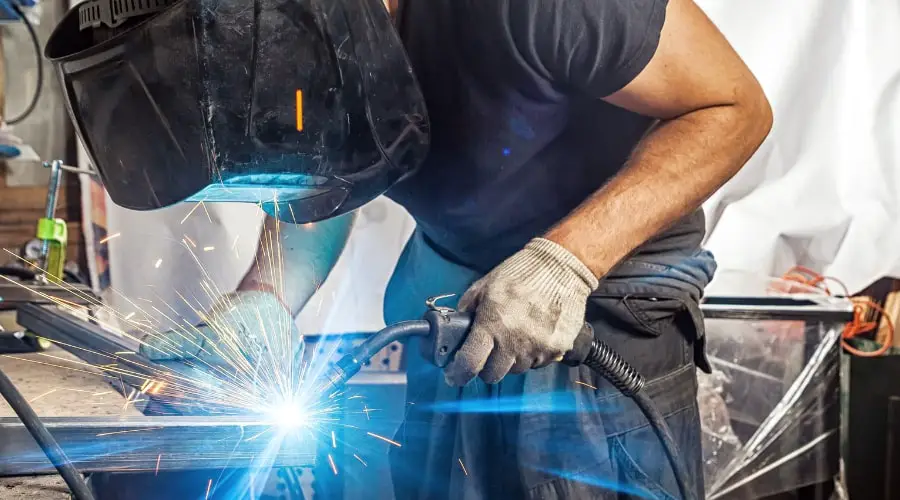Welding is a high-stakes profession, where the manipulation of extreme heat is the norm. In this environment, safety is paramount. Among the many protective gears a welder uses, the welding helmet stands out as an indispensable tool.
It safeguards the welder’s eyes, face, and neck from harmful sparks, spatter, and intense radiation. But have you ever wondered what these critical pieces of safety equipment are made of?
In this article, we’ll dissect the composition of a welding helmet, examining each component and the materials used to ensure the welder’s safety. Let’s delve in!

An In-Depth Analysis of a Welder’s Essential Safety Gear
Welding helmets are a staple in the arsenal of any professional or hobbyist welder. They provide critical protection from potential hazards such as extreme light, heat, and harmful ultraviolet and infrared radiation. But what exactly are these vital pieces of safety equipment made of?
Materials Used in Welding Helmets

Outer Shell
The outer shell of a welding helmet is usually made from a lightweight, heat-resistant plastic such as polyamide or nylon. These materials are chosen for their excellent thermal properties, resisting deformation under extreme heat conditions.
Viewing Lens
The viewing lens, an integral part of a welding helmet, is made from high-quality, tinted glass or polycarbonate. It protects the welder’s eyes from bright light and harmful radiation while providing a clear view of the welding area.
Auto-Darkening Filters (ADF)
Auto-darkening filters are a more recent innovation in welding helmet technology. These are typically made from liquid crystal display (LCD) technology, similar to that used in televisions and computer monitors.
Headgear
The headgear, which helps secure the helmet on the user’s head, is usually made of a comfortable, adjustable material. Often, this includes a combination of plastic and foam padding to ensure a snug fit while maintaining comfort during long hours of work.
The Making of a Welding Helmet
The Forming Process
The outer shell of a welding helmet is typically formed through a process known as injection moulding. The plastic material is heated until it becomes a liquid and then injected into a mould in the shape of a helmet. Once cooled, the helmet is released from the mold, and ready for further assembly.

Assembling the Parts
After the outer shell is formed, the lens and any additional components, such as an auto-darkening filter, are installed. The viewing lens is secured in a protective housing, which is then fitted into the helmet’s shell.
Final Touches
The last step in the manufacturing process is to attach the adjustable headgear. Once this is done, the helmet is complete and ready for use.
Frequently Asked Questions:
1. What is a welding helmet made of?
A welding helmet is primarily made of lightweight, heat-resistant materials such as polyamide or nylon for the outer shell. The viewing lens is typically made of high-quality, tinted glass or polycarbonate, and the headgear consists of adjustable, comfortable materials such as plastic and foam padding.
2. What material is used for the outer shell of a welding helmet?
The outer shell of a welding helmet is usually made from a lightweight, heat-resistant plastic such as polyamide or nylon. These materials resist deformation under extreme heat conditions.
3. What is the viewing lens of a welding helmet made from?
The viewing lens of a welding helmet is made from high-quality, tinted glass or polycarbonate. This lens protects the welder’s eyes from bright light and harmful radiation while providing a clear view of the welding area.
4. What kind of technology is used in auto-darkening filters of welding helmets?
Auto-darkening filters in welding helmets use liquid crystal display (LCD) technology. This technology allows the lens to darken automatically when it detects the bright light of a welding arc.
5. How is a welding helmet constructed?
The outer shell of a welding helmet is formed through injection moulding, where heat-resistant plastic is heated until it becomes a liquid, and then injected into a helmet-shaped mould. Once cooled, the helmet is released from the mould, and the lens, auto-darkening filter, and headgear are installed.
6. How does a welding helmet protect a welder?
A welding helmet protects a welder by shielding their face, neck, and eyes from the heat, sparks, and intense light produced during welding. It also protects against harmful ultraviolet and infrared radiation.
The lens, especially if equipped with an auto-darkening filter, allows the welder to see their work clearly without the need to remove the helmet, enhancing both safety and productivity.
Conclusion
Welding helmets are a marvel of safety design, offering much-needed protection to welders worldwide. The materials used in their construction are carefully chosen for their properties, ensuring they can withstand the harsh conditions of welding.
From lightweight, heat-resistant plastics to high-quality lenses and advanced LCD technology, every component of a welding helmet is designed with the safety and comfort of the welder in mind.
Helmetslab is a website that focuses on providing in-depth reviews and information about different types of helmets, including motorcycle helmets and others helmets. I am writing a post with proper research on the info that helps helmet users.
